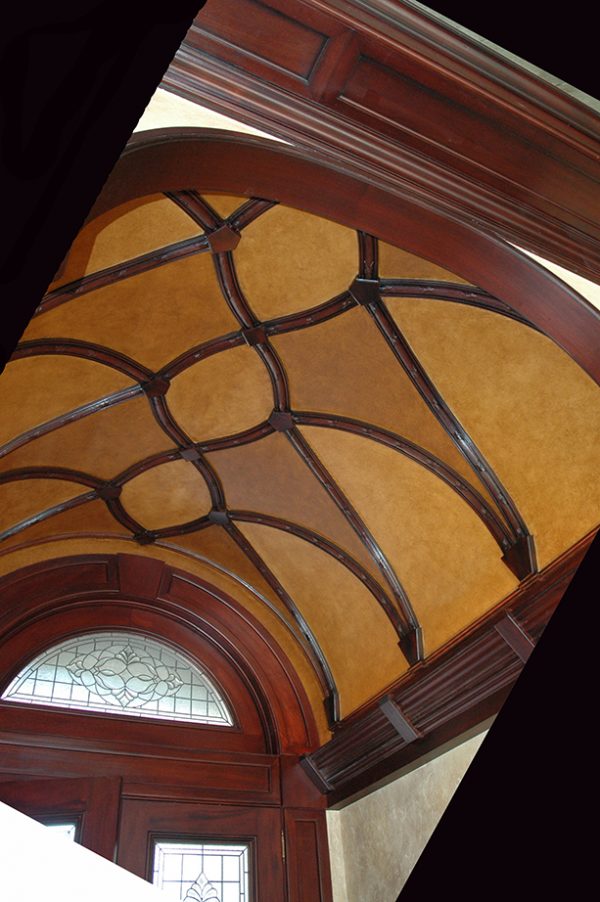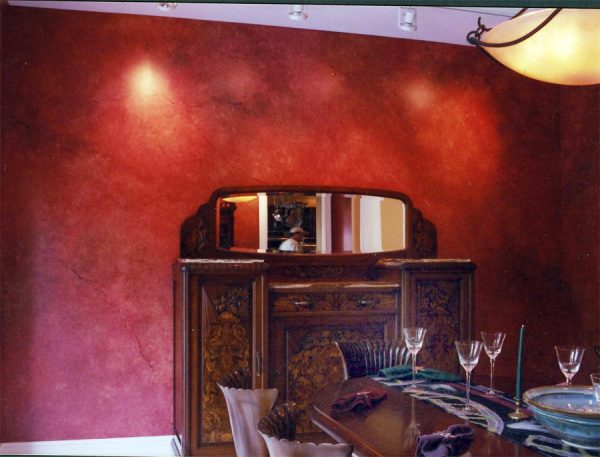The origins of faux painting and finishing are as old as painting itself. The term “faux” is translated from the French to mean fake or false in the English language. Historically when one refers to faux-anything it generally means fake-something. Faux-diamond for example means fake diamond. The connotation of a fake diamond is that it is something less than real or ever worse, counterfeit or fugazi. In the case of a diamond I would probably agree especially if it was passed off as real. The art of the faux painting is a different story. When we think of the art of faux painting in recent years, we thing of popular materials being imitated with paint such as marble, stone, wood and semi-precious materials. Malachite, lapis lazuli and tortoise shell are examples of semi-precious materials which are great design options in faux painting. The intention is to fool the eye of the average beholder. Faux painting is a high art form and can be as costly as the material it attempts to depict. Value and cost of course are relative. If the real thing is appropriate, then it should be considered. It is not always a matter of money when choosing a real material over a faux painted alternative. Below are some examples of our work and a brief description.
The artistic skill involved in faux painting is different with each artist. I have a lot of personal philosophies on faux painting as with most everything we do at K. Salowe & Co. We have developed our strengths over time and with practice. Our evolution of capabilities has come with the benevolence of eager clients looking to explore new ideas and courageous artisans who met the challenges. My portfolio is full of projects that I had never attempted before the need presented itself through the design process. I always applaud my clients with the courage to explore the previously unexplored. It is how we all evolve.
The Home Office Library ABOVE is an example of faux painting for interior walls , built-in cabinetry and ceilings as a total concept. The concept was developed from four finishes; a pale gold, warm honey-gold, tomato red and moss green. Finish samples were developed and presented with a drawing of the concept. In the end it is the owners favorite room in this 12,000 sq ft. house
While all of the architectural elements of this interior below are physically real, the wood portions are faux painted walnut with satin lacquer. Real walnut columns were not an option. The faux finish Is very high quality and looks unquestionably real.
Please visit out page on Faux and Distinctive Finishes for more info












Leave A Comment
You must be logged in to post a comment.